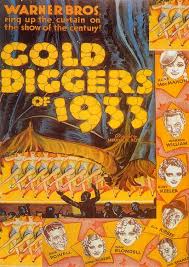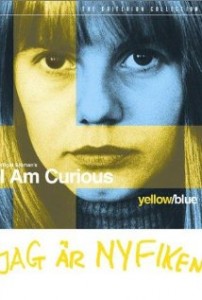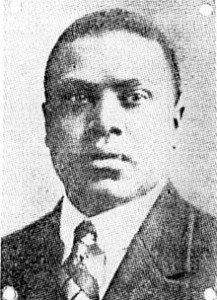I am in the middle of a course I teach regularly called “Movies and American Culture”–basically a expanded version of the stuff I’ve written about for most of my career. Each time I teach the class, I am struck by the reaction students have to the movies I show that demonstrate some kind of BIG moment in the history of movie culture. Note, I am not necessarily talking about movies that have made the most money or won the most awards or established a genre or have been ranked consistently near the top of those periodic lists produced by critics–though a film from my list could hit one or more of those features. Rather, I am talking about a list of films that appear random, or so it seems. Films such as “The White Terror” from 1915; Oscar Micheaux’s “The Homesteader” (1918) and “Within Our Gates” (1920); “The Gold Diggers” of 1933 and 1935; Kenneth Anger’s “Fireworks” (1947); Roberto Rossellini’s “The Miracle” (1950); Elia Kazan’s “Pinky” (1949) and “Baby Doll” (1956); Andy Warhol’s “The Chelsea Girls” (1966); “Bonnie and Clyde” (1967), and “I Am Curious (Yellow) (1968).
One thing that all these films have in common is that my students have never heard of them. Frankly they shouldn’t have. The other thing the films have in common, as you probably already know, is that they tested the bounds of what was considered official movie culture in their respective eras.
 Some such as “The Gold Diggers,” “The Miracle” and “Baby Doll” were involved in debates about the limits of censorship in regard to the Production Code Administration, the U.S. Supreme Court, and the Catholic Legion of Decency, respectively. Other films, such as “The White Terror” give me a chance to speak about the paradox of democratic art. The fact that this film was and remains utterly forgettable is the point and Randolph Bourne made this deliciously clear in a landmark essay entitled “The Heart of the People,” in which he observed: “After ‘The White Terror,’ I begin to feel like an esoteric little bubble on a great stream of the common life. What makes me laugh or blush doesn’t make my fifty per cent of the people laugh or blush.”
Some such as “The Gold Diggers,” “The Miracle” and “Baby Doll” were involved in debates about the limits of censorship in regard to the Production Code Administration, the U.S. Supreme Court, and the Catholic Legion of Decency, respectively. Other films, such as “The White Terror” give me a chance to speak about the paradox of democratic art. The fact that this film was and remains utterly forgettable is the point and Randolph Bourne made this deliciously clear in a landmark essay entitled “The Heart of the People,” in which he observed: “After ‘The White Terror,’ I begin to feel like an esoteric little bubble on a great stream of the common life. What makes me laugh or blush doesn’t make my fifty per cent of the people laugh or blush.”
Other films involve issues of race (Micheaux’s two films, and Kazan’s “Pinky”) and issues of sexuality (“Fireworks,” “The Chelsea Girls,” and “I Am Curious”). Usually the only film students have heard of is the violent “Bonnie and Clyde” thought very, very few have actually seen the film. What they have seen, typically, is how the two attractive, appealing stars–Warren Beatty and Faye Dunaway–die in a hail of bullets at the end of the film.
My point is not that my students should be more cinematically literate or that they should appreciate these films for creating the relatively expansive film culture they enjoy today. Rather, a recurring discussion that we have is how we catalog films and, more specifically, how the emergence of the blockbuster in American film forced or fostered a break in the American conversation about movie culture. Again, my students don’t need to know about the relatively small films that I introduce them to, that is my job. But neither does that kind of ignorance belie lack of ability to talk about films. They know a great deal about BIG films, in large part because they have grown up in an era that has been constructed by the blockbuster and all that is involved in its culture. These films are the final realization of Bourne’s lament.
Bourne recognized the irony in watching “The White Terror”: the culture manufactured by elites to be inaccessible to everyone else was being replaced by a culture he had no desire to appreciate.
I don’t mean that it would have been any better if they had all chosen Renaissance pictures or Ibsen plays or Dante. I feel even a certain unholy glee at this wholesale rejection of what our fathers reverenced as culture. But I don’t feel any glee about what is substituted for it. We seem to be witnessing a lowbrow snobbery. In a thousand ways it is as tyrannical and arrogant as the other culture of universities and millionaires and museums. I don’t know which ought to be more offensive to a true democrat—this or the cheapness of the current life that so sadly lacks any raciness or characteristic savor. It looks as if we should have to resist the stale culture of the masses as we resist the stale culture of the aristocrat.
 I think I would like to update Bourne’s lament. I want to understand what the blockbuster has wrought. It has morphed into something far more complex and vital than its earliest manifestations in a mechanical shark or mechanical stormtroopers (pace, “Star Wars” fans). In an era that has squishy limits on what is permissible or considered artistic, the blockbuster has become a way to locate large scale popular debates that at once tell us something about the artistic tastes of our democracy and the narratives we accept as a democratic citizens. After all what poll can compete with a box office that reflects tens of millions of people? It must mean something–and it does but of course not solely in ticket sales. The bounce of BIG films can be found on-line in the hundreds (or in aggregate, thousands) of comments under critiques of these films.
I think I would like to update Bourne’s lament. I want to understand what the blockbuster has wrought. It has morphed into something far more complex and vital than its earliest manifestations in a mechanical shark or mechanical stormtroopers (pace, “Star Wars” fans). In an era that has squishy limits on what is permissible or considered artistic, the blockbuster has become a way to locate large scale popular debates that at once tell us something about the artistic tastes of our democracy and the narratives we accept as a democratic citizens. After all what poll can compete with a box office that reflects tens of millions of people? It must mean something–and it does but of course not solely in ticket sales. The bounce of BIG films can be found on-line in the hundreds (or in aggregate, thousands) of comments under critiques of these films.
Thus I hope to boldly go where few have gone before, by looking at the social and, yes, intellectual history of the American blockbuster. Excuse me while I pop some popcorn and watch a big, popular, money-generating, critic-proof movie.



2 Thoughts on this Post
S-USIH Comment Policy
We ask that those who participate in the discussions generated in the Comments section do so with the same decorum as they would in any other academic setting or context. Since the USIH bloggers write under our real names, we would prefer that our commenters also identify themselves by their real name. As our primary goal is to stimulate and engage in fruitful and productive discussion, ad hominem attacks (personal or professional), unnecessary insults, and/or mean-spiritedness have no place in the USIH Blog’s Comments section. Therefore, we reserve the right to remove any comments that contain any of the above and/or are not intended to further the discussion of the topic of the post. We welcome suggestions for corrections to any of our posts. As the official blog of the Society of US Intellectual History, we hope to foster a diverse community of scholars and readers who engage with one another in discussions of US intellectual history, broadly understood.
Ray: Thanks for this. I love that fantastic quote from Bourne. Amazing. So perceptive and conflicted in its historical context.
On “what the blockbuster has wrought,” I think it’s just a massively scaled up version of Bourne’s lament, to a degree. The blockbuster can impose a cultural conversation (useful or useless) where none existed. It also sets the terms of conversation, whether by limiting or expanding. A blockbuster is tyrannical in its own way. They homogenize cultural discourse in way that would’ve repulsed Bourne. What’s different now, among thinking people, is that few see film products as merely the “stale culture of the masses.” The are now opportunities to open a wider discourse. And a blockbuster just means the discourse has a chance to be even wider. – TL
Blockbusters are great, and don’t let anybody tell you different. What’s better than coming out of a cool movie theater into the hot summer night, part of the crowd, arm in arm with your friends, jostling shoulders, joshing, shaking your head in amusement or amazement at the unlikely spectacle you’ve just seen? That’s Hollywood!